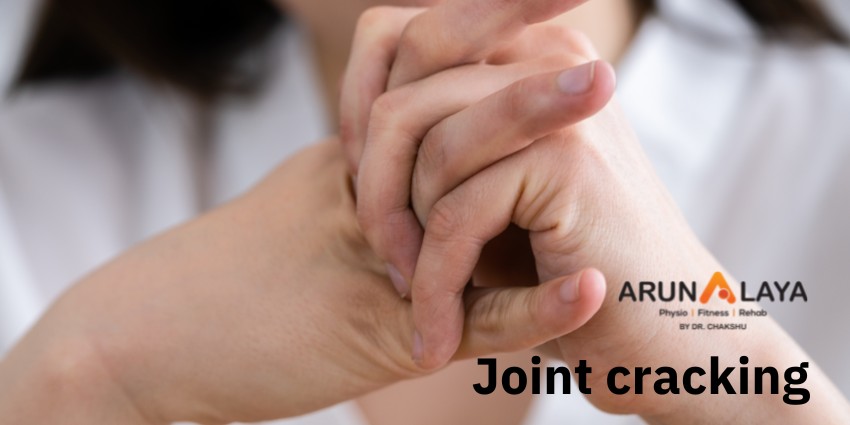Joint cracking
Cracking a joint is manipulating one’s joints to produce a distinct cracking or popping sound. It
is sometimes performed by physical therapists, chiropractors, osteopaths
The cracking mechanism and the resulting sound is caused by nitrogen cavitation bubbles
suddenly partially collapsing inside the joints. To be able to crack the same knuckle again
requires waiting about 15 minutes before the bubbles will be able to form again.
NOTE- “Cracking of joints doesnot believe to cause arthritis”.
CAUSES
In 2015, research showed that bubbles remained in the fluid after cracking, suggesting that
the cracking sound was produced when the bubble within the joint was formed, not when it
collapsed. In 2018, a team in France created a mathematical simulation of what happens in a
joint just before it cracks. The team concluded that the sound is caused by bubbles’ collapse,
and bubbles observed in the fluid are the result of a partial collapse. Due to the theoretical basis
and lack of physical experimentation, the scientific community is still not fully convinced of this
conclusion.
The snapping of tendons or scar tissue over a prominence (as in snapping hip syndrome) can
also generate a loud snapping or popping sound.
For many decades, the physical mechanism that causes the cracking sound as a result of
bending, twisting, or compressing joints was uncertain. Suggested causes included:
1)Cavitation within the joint—small cavities of partial vacuum form in the synovial fluid and then
rapidly collapse, producing a sharp sound.
2)Rapid stretching of ligaments.
3)Intra-articular (within-joint) adhesions being broken.
4)Formation of bubbles of joint air as the joint is expanded.
Why do people do it?
Studies show that as many as 54 percent of people crack their knuckles. They do it for a lot of
reasons, including:
Sound. Some people like hearing the sound knuckle cracking makes.
The way it feels. Some people think cracking their knuckles makes more room in the joint, which
relieves tension and increases mobility. However, although it may feel like there’s more room,
there’s no evidence that there actually is.
Nervousness. Just like wringing your hands or twirling your hair, cracking your knuckles may be a
way to occupy your hands when you’re nervous.
Stress. Some people who are stressed need to take it out on something. Cracking knuckles may
allow for diversion and release without actually causing harm.
Habit. Once you start cracking your knuckles for any of these reasons, it’s easy to keep doing it
until it happens without even thinking about it. When you find yourself unconsciously cracking
your knuckles many times a day, it’s become a habit. People who do it five times a day or more
are called habitual knuckle crackers.
Tips to stop cracking
1)Although cracking your knuckles isn’t harming you, it may be distracting to people around you.
You might find it difficult to stop if it’s become a habit.
2) Some tips that might help you break the habit:
3)Think about why you crack your knuckles and address any underlying issues.
4)Find another way to relieve stress, such as deep breathing, exercise, or meditation.
5)Occupy your hands with other stress relievers, such as squeezing a stress ball or rubbing a
worry stone.
6)Become aware of each time you crack your knuckles and consciously stop yourself

